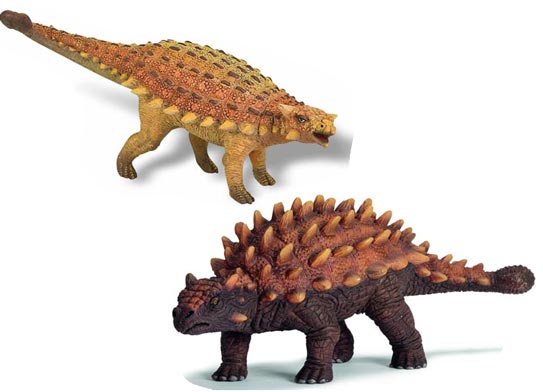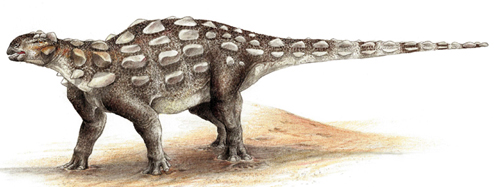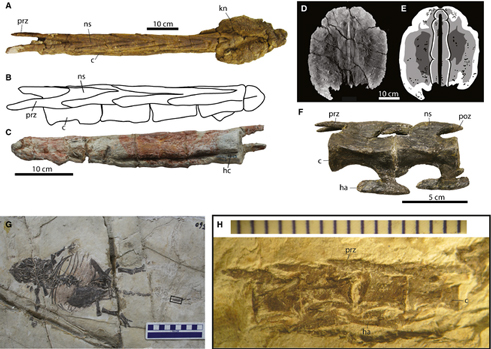A Tale of Ancient Tails in the Ankylosauridae
How Did the Ankylosaur Get Its Club Tail?
Dinosaurs as “Living Tanks”
Ankylosaurs are often described as “living tanks” these quadrupeds seemed to have taken body armour to the extremes with some specimens such as Saichania from Asia and the Late Cretaceous North American ankylosaurids Euoplocephalus and Ankylosaurus even having armoured eyelids. They were a very diverse and widespread group of ornithischian dinosaurs, in every sense of the world. True, ankylosaur fossils have been recorded from China, Mongolia, Canada, the United States, Australia and there have even been fragmentary bones attributed to an ankylosaur found near Folkestone (Kent, England).
In addition, these animals have very wide pelvic regions in proportion to the rest of their robust bodies. The wide pelvis is an adaptation to accommodate a large gut.
Heavily Armoured Dinosaurs with a Long Evolutionary History
Picture credit: Everything Dinosaur
Most children can describe these herbivores, they may be very well known members of the Dinosauria, with an albeit brief appearance in the film “Jurassic World” adding to their popularity, however, a mystery surrounding the Ankylosauridae may finally have been solved.
How Did the Ankylosaur Tail Club Evolve?
By mapping the evolutionary history of these armoured dinosaurs from their Jurassic origins through to the very end of the Cretaceous the answer as to how some members of the Ankylosauridae developed that distinctive tail club may have finally been resolved.
According to research published in the academic publication “The Journal of Anatomy”, the fused tail came first and the bony club evolved later. Postdoctoral researcher Victoria Arbour (North Carolina State University and the North Carolina Museum of Natural Sciences), authored the report, a study she started when at the University of Alberta under the tutelage and guidance of renowned palaeontologist Professor Phil Currie.
Studying the Ankylosauridae Family
Victoria has spent a large part of her career studying the Ankylosauridae and she is viewed by Everything Dinosaur team members as the “go to” person when it comes to the ankylosaurids.
For example, back in October 2014, Everything Dinosaur reported on a new species assigned to the Ankylosauridae named by Victoria – Zaraapelta (Z. nomadis), fossils of which were found during an expedition to Mongolia led by Professor Currie.
To read more about Zaraapelta: Zaraapelta – In Praise of Victoria Arbour.
This new study involved examining the fossilised remains of some of the earliest known ankylosaurids, dinosaurs like the Chinese Liaoningosaurus from Yixian County, Liaoning Province (north-eastern China), as well as many Late Cretaceous forms. An ankylosaur’s tail is composed of a handle and a bony knob. The knob is comprised of fused osteoderms, a special kind of bone formed in the skin. The handle is represented by the distal end of the tail (caudal vertebrae) that support the weight of the knob.
Commenting on the Study
Victoria explained:
“In order for an ankylosaur to be able to support the weight of a knob and swing it effectively, the tail needs to be stiff, like an axe handle. For that to occur, the vertebrae along the tail had to become less flexible, otherwise the momentum generated by the knob’s weight could tear muscle or dislocate vertebrae.”
Gobisaurus – A 90-Million-Year-Old Ankylosaur
Picture credit: Sydney Mohr
A Tale of Tails
Other ankylosaurids included in the analysis were Gobisaurus (Turonian faunal stage of the Cretaceous) and Pinacosaurus from the younger Campanian faunal stage of the Cretaceous.
Three Ways in Which the Ankylosaurid Tail Could Have Evolved
There are three ways in which the bony club and the fused, stiffened tail could have evolved:
- Bony club first – early ankylosaurids would show evidence of osteoderms forming and enveloping the end of the tail
- Handle first – primitive members of this family would have overlapping or fused tail bones
- The club and handle could have evolved simultaneously, if this was the case, then Early Cretaceous ankylosaurids would show both anatomical features, perhaps with tails getting stronger and tail clubs getting heavier over time
How Did the Ankylosaurs Get their Unusual Tails?
Picture credit: Journal of Anatomy
Comparative Analysis
The comparative analysis revealed that by the Early Cretaceous, ankylosaurids had begun to develop stiff tails with fused caudal vertebrae. The bony knob feature did not appear in the fossil record until the Late Cretaceous.
Dr Arbour concluded:
“While it’s possible that some of the species could still have developed the handle and knob in tandem,” it seems most likely that the tail stiffened prior to the growth of the osteoderm knob, in order to maximise the tail’s effectiveness as a weapon.”
The upshot of this conclusion is that ankylosaurs used their tails as defensive weapons first and then only later did the heavy club on the tail evolve. Commenting on this work a spokesperson from Everything Dinosaur stated:
“This is a fascinating study, one can speculate that the bony club tail evolved in response to the emergence of bigger and more dangerous theropod predators such as the tyrannosaurids that could be regarded as the apex terrestrial predators in the Northern Hemisphere towards the end of the Mesozoic.”
The Tail Bones of Ankylosaurs
Picture credit: Journal of Anatomy
Tail Clubs
The picture above shows (A) an oblique dorsal view of the tail club of Dyoplosaurus acutosquameus from Canada, the fossils of which are around 76 million years old (Campanian). This is typical of the derived Ankylosaurine tail with a fused tail and a bony club. Gobisaurus (G. domoculus) line drawing is (B) a left lateral view of this earlier ankylosaurid’s tail showing fusing of the bones.
Picture (C) shows the same fossil specimen as (B), but this time viewed from the other side, the deep groove running along the bottom is the haemal canal. X-ray (D) and the interpretive drawing (E) are from an ankylosaur tail from Alberta, the last tail bone is small and rounded when compared to the long distal caudal bones. Picture (F) shows two tail bones from Mymoorapelta maysi, a basal member of the Ankylosauria known from the Late Jurassic of the United States.
Typical of Nodosaurids and Basal Ankylosaurs
This anatomy is typical of nodosaurids and other basal ankylosaurs, the prezygapophyses (forward projecting points of bone located on the neural arch of the vertebrae), overlap the adjacent vertebrae by about 25% of the centrum (the main part of the vertebra situated below the neural arch). In contrast, picture (G) shows the fossilised remains of Liaoningosaurus (L. paradoxus) which dates from the Aptian faunal stage making the fossil some 120 million years old. The boxed area in (G) is highlighted and magnified (H). In Liaoningosaurus the prezygopophyses overlap the preceding vertebra by at least 50% including a much more fused and stiffened tail, more typical of later ankylosaurids.
Ankylosaur Tail Club
This research has provided new evidence to help scientists understand the evolution of ankylosaurid tails. Fossils from China such as those of Liaoningosaurus suggest that the mechanism to support a tail club may have evolved at least forty million years before it was taken to extremes by the Late Cretaceous ankylosaurs such as Euoplocephalus and Pinacosaurus. Early ankylosaurids evolved the handle first, those distal ossified osteoderms came later.
For models and replicas of armoured dinosaurs and other prehistoric creatures: PNSO Age of Dinosaurs.





